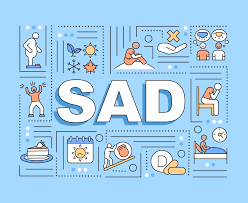Seasonal Depression—What is it?

As winter is in full swing, you can tell that people seem to be less energetic, less motivated, and simply in a bad mood. Many people claim that they have seasonal depression, which is a real condition, shared by many.
Seasonal depression, other known as Seasonal Affective Disorder (SAD), is a form of depression that follows a recurring seasonal pattern. This disorder seems to be more common in those living further away from the equator.
The “Winter Blues” seems to be at its peak on the third Monday of January, known as Blue Monday.
Symptoms of SAD
- Sadness
- Low energy
- Fatigue
- Losing interest in activities once enjoyed
- Changes in appetite, weight, and sleeping patterns
- Social withdrawal.
The Pandemic of Winter Blues
Seasonal depression affects both men and women, but is more prevalent in women during their fertile years.
About 5% of people struggle with “syndromal” SAD, which affects people’s ability to function in day-to-day living.
About 15% of people struggle with “subsyndromal” SAD, which isn’t apparent enough for diagnosis.

What Causes Seasonal Depression?
The cause for SAD is unknown, but many scientists have speculations about what may be the true cause.
Many scientists argue that biological vulnerability, such as gender or genetics, play as large risk factors in developing SAD
Scientists believe that reduced environmental light and stress also carry causes for seasonal depression.
Other scientists explained that people with SAD need a higher intensity of light to feel energized in winter, as evidenced by their abnormal winter melatonin secretion patterns.
Treating SAD
Oddly enough, light therapy is a great treatment method for seasonal depression.
As little as 30 minutes a day can cause for a significant increase in one’s mood.
It is advised that people are exposed to 10,000 lux, which can be compared to being outside on a sunny day during the summer.







